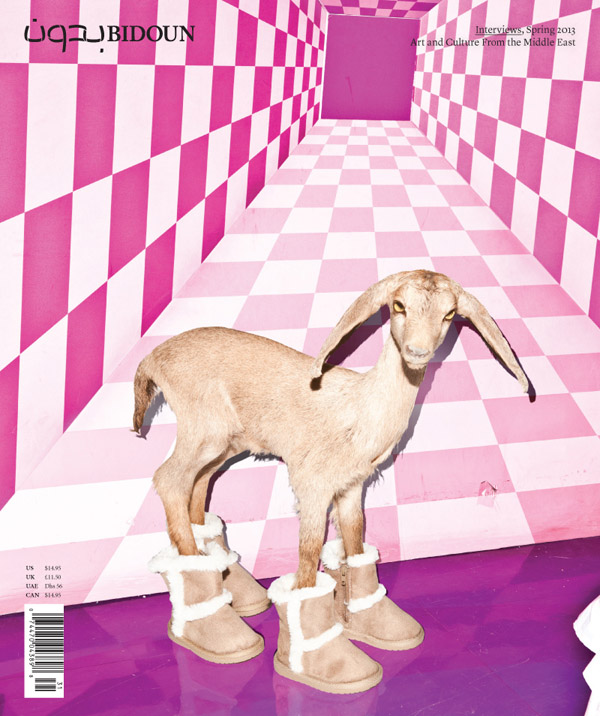If you can picture only one building in Iran, it is probably Tehran’s Azadi Tower, a massive, white marble megalith, some fifty meters tall, set inside a landscaped island on the western side of the city, just a few miles from the airport. The Azadi (“Freedom”) Tower has become visually synonymous with its city — not unlike the Eiffel Tower, the Empire State Building, or even the Kremlin — a metonym for modern Tehran. Built in 1971 for the celebrations in honor of the 2,500-year anniversary of the Persian Empire, the structure was originally named the Shahyad — the king memorial. And indeed, its form seems fit for a king: its wide base tapers upward to a high arch, densely interwoven with lines of ribbing, which is itself the underside of the thick, beveled tower at the monument’s top. From different angles, the geometry can beguile: wide and squat from one side, tall and lean from another. The stone surfaces curve and flow like a ball gown, and its formal complexity suggests something at once deeply ancient and firmly modernist, a kind of trans-historical, citational mash-up.
Giorgio Agamben is the author of more than twenty-five books and is extremely well known. My dog, Bear, is not. Bear is six months old at the time of writing and is exceptional in many regards. He is funny and fierce. His mother is an Akita, a Japanese breed once used to hunt large game such as deer, wild boar, and Asian black bears. (For a time possession was restricted to the Japanese aristocracy.) Special outfits were required for the handlers, and a special language employed to address the dogs. Times have changed.
Jeremy Deller’s Turner Prize win in 2004 took nearly everyone by surprise, especially him. He is the sort of artist that can restore one’s faith in the art world, less for the goodness of his politics than for the near guilelessness of his interests and enthusiasms. But his enthusiasms often take him into political contexts, whether he is making art out of a pivotal episode from what his interlocutor here calls “the radical Eighties” — the brutal suppression of striking mineworkers by Margaret Thatcher’s conservative government, beamed nightly into British homes on television, which became the basis of Deller’s video work The Battle of Orgreave — or the “sculpture” 05 March 2007, the remains of an exploded vehicle from Baghdad — residual byproducts of Operation Iraqi Freedom and the subsequent British-American occupation. The bombed-out automobile has been exhibited at the Imperial War Museum in London, but also packed onto a flatbed truck and driven around the United States.
Deller will be pitching for Britain this year at the Venice Biennial. Sukhdev Sandhu is a critic and proprietor of the Colloquium for Unpopular Culture at New York University. They are both in their ways extremely English, as is this conversation. Deller and Sandhu spoke at Soho House in New York last November, the morning after the opening night of Deller’s second solo show at Gavin Brown’s enterprise.
Mona Eltahawy has a knack for inspiring hatred. Egyptian activists and bloggers have called her an alien, man-hating, woman-hating, out-of-control psychotic. Non-Egyptian bloggers have called her a Muslim Nazi bitch. Pam Geller, the fulminator behind the Ground Zero Mosque scare, called her a “fascist savage.” A cover story on “misogyny in the Middle East” for Foreign Policy — titled “Why Do They Hate Us?” and illustrated by images of nude women painted black, only their eyes showing, like human hijab — generated tens of thousands of angry words in response. Sondos Asem, the young female spokesperson for the Muslim Brotherhood, decried her “one-dimensional reductionism and stereotyping.” There were parodies, character assassinations, death threats. Most people would wilt in the face of all this vitriol, ridicule, and angst.
Larry Gagosian is the kind of person about whom everybody has an opinion, though little is actually known. Rumors swirl around him like wind on a djinn. He only dates tall black women. He’s secretly a Rosicrucian. He is a great friend to widows and children. He was married once for five minutes. He drives a Ferrari. He was friendly with Kurt Vonnegut. He loved Leo Castelli, and vice versa. He has the personality of a swordfish. (This last, courtesy of an interviewer in the Financial Times.)
On February 6, 2011, Egypt’s Head of the Supreme Council for Antiquities stood atop the lotus-like Cairo Tower in a resplendent suit, complete with handkerchief, and delivered an impassioned defense of his boss, the beleaguered septuagenarian strongman Hosni Mubarak. “I think the President is fine,” he told a BBC interviewer. “The President would like to stay. And all of us would like him to stay.” He continued, “He made the whole world respect Egypt, and he was a kind man and a good man and I myself always respected this man.”
Letter to the Editor
Profile
Michael Stevenson
Kate Sutton
Work in Progress
Céline Condorelli
Kaelen Wilson-Goldie
Interviews
Michelle Kuo
Negar Azimi and
Michael C. Vazquez
Larry Gagosian
Negar Azimi
Giorgio Agamben
Leland de la Durantaye
Zahi Hawass
Ursula Lindsey
Yasmine Hamdan
Sophia Al-Maria
Jeremy Deller
Sukhdev Sandhu
Navid Negahban
Lisa Farjam
Mona Eltahawy
Yasmine El Rashidi
Hossein Amanat
Benjamin Tiven
Conner Habib
Anna Della Subin
Marina Warner
Omar Berrada
Exhibitions
Gwangju Biennale
Sohrab Mohebbi
Hassan Khan
Sarah-Neel Smith
Documenta 13
Tom Francis, Clare Davies, and Sohrab Mohebbi
Slavs and Tatars
Media Farzin

